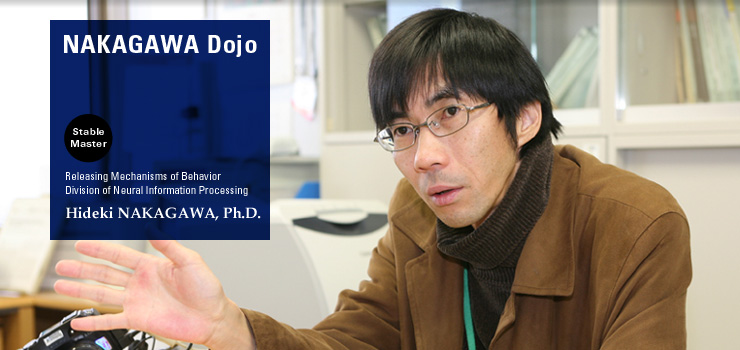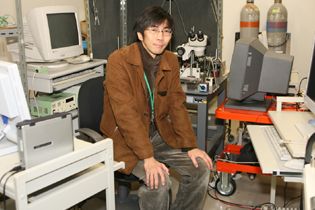 |
| |
 |
| Animals have acquired a variety of strategic
behaviors through the process of evolution. If we can identify
the mechanisms governing these behaviors, we can apply this
knowledge to robots and other engineering fields. Our research
focuses particularly on animal behaviors that are guided by
visual information, such as avoiding collision with a dangerous
object and orienting of the body in relation to prey. Our
laboratory is very unusual in that we conduct research on
behavior in conjunction with research on the nervous system
in the same model animal. To do this, we use frogs, in which
visually guided behavior and the nervous system can easily
be studied simultaneously. The extraction of algorithms for
behavioral expression will provide new ideas for the development
of control devices for robots, vehicles, etc. |
 |
| Students
learn how to conduct animal behavioral experiments and
undertake statistical analysis of the data obtained.
They begin by studying the experimental apparatus used
to record movement and then learn how to carry out statistical
analysis using existing data. Next they use frogs to
conduct actual experiments and analyze the data. It
is very important for students who wish to develop brain-like
information processing systems to get hands-on experience
in handling real animals and observing their behavior.
Through our program, we hope to provide students with
the opportunity to theoretically process data from animal
experiments, which include many uncertain elements such
as individual variation, and to carefully interpret
the adaptive meaning of the results they obtain. |
 |
|
|
|
|